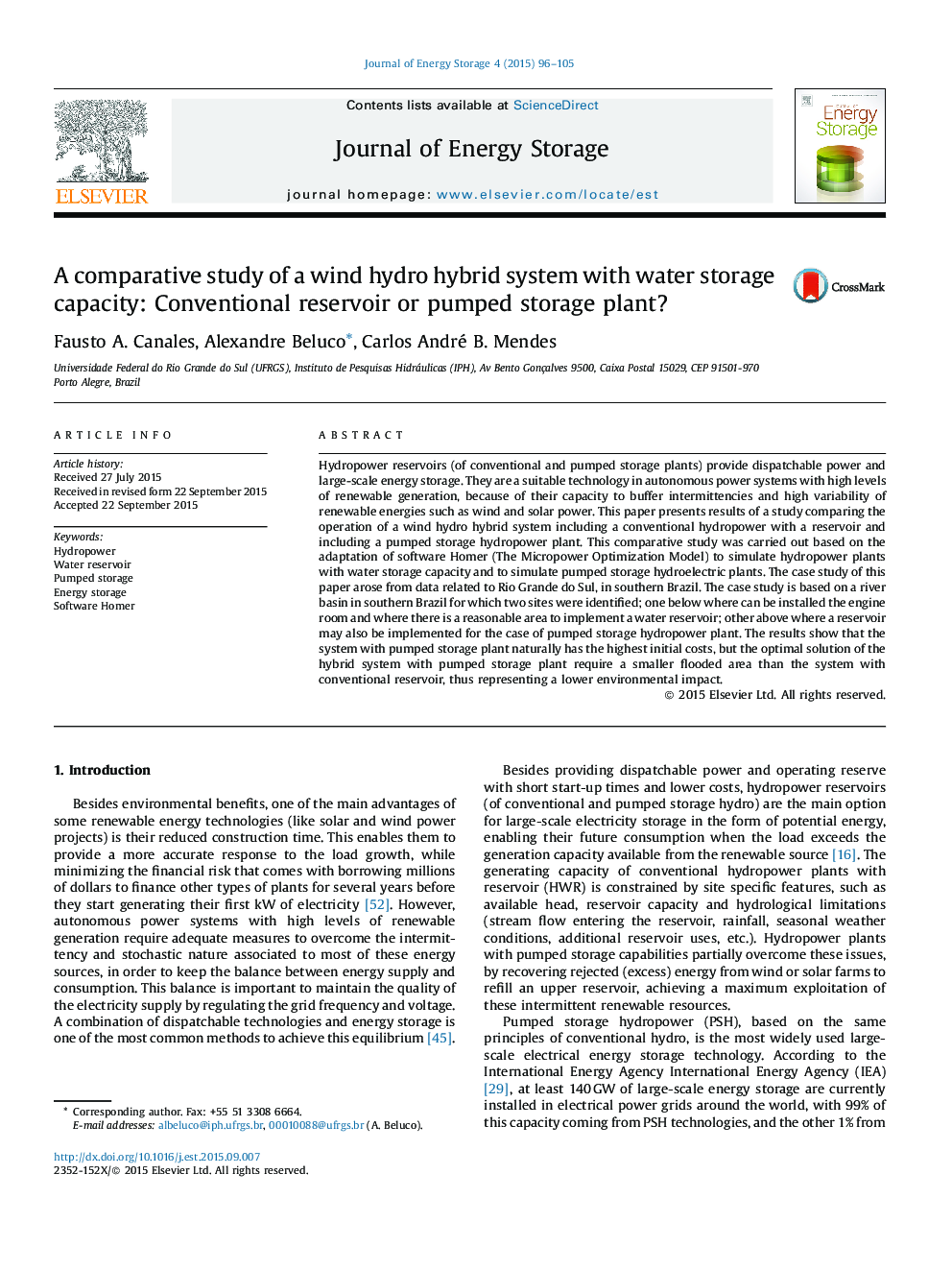| Article ID | Journal | Published Year | Pages | File Type |
|---|---|---|---|---|
| 7540485 | Journal of Energy Storage | 2015 | 10 Pages |
Abstract
Hydropower reservoirs (of conventional and pumped storage plants) provide dispatchable power and large-scale energy storage. They are a suitable technology in autonomous power systems with high levels of renewable generation, because of their capacity to buffer intermittencies and high variability of renewable energies such as wind and solar power. This paper presents results of a study comparing the operation of a wind hydro hybrid system including a conventional hydropower with a reservoir and including a pumped storage hydropower plant. This comparative study was carried out based on the adaptation of software Homer (The Micropower Optimization Model) to simulate hydropower plants with water storage capacity and to simulate pumped storage hydroelectric plants. The case study of this paper arose from data related to Rio Grande do Sul, in southern Brazil. The case study is based on a river basin in southern Brazil for which two sites were identified; one below where can be installed the engine room and where there is a reasonable area to implement a water reservoir; other above where a reservoir may also be implemented for the case of pumped storage hydropower plant. The results show that the system with pumped storage plant naturally has the highest initial costs, but the optimal solution of the hybrid system with pumped storage plant require a smaller flooded area than the system with conventional reservoir, thus representing a lower environmental impact.
Related Topics
Physical Sciences and Engineering
Energy
Energy (General)
Authors
Fausto A. Canales, Alexandre Beluco, Carlos André B. Mendes,
